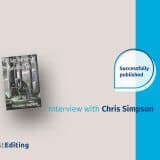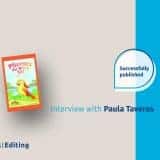
There are many different rules for comma usage, and unlike some other sorts of punctuation (e.g., the question mark, the period), the rules can be rather fluid. Here is a short-ish breakdown of how to use commas, and when to use commas:
- Use commas to separate items written in a series.
Example: The dog, the cat, and the goldfish agree that it is going to rain.
(There is a current debate about the comma after “cat” in the above sentence. It is the serial or Oxford comma, and is being eradicated from modern usage, but is still being recommended in the Chicago and APA styles.)
- Use a comma to separate two or more adjectives (descriptive words) before a noun if the word order of the two could be reversed and the comma takes the place of “and.”
Example: The slumbering, snoring dog awoke with a start.
- Use a comma after a nonessential clause (one that begins with who, whom, which, or that, and includes a verb).
Example: The innkeeper, who is still sleeping, prepared our breakfast the night before.
Follow These Rules for Comma Usage
- Use commas to set off direct address to a person.
Example: Joanne, please stop talking.
- Use commas to set off expressions that interrupt or introduce the sentence.
Example: Of course, I am right about the situation. However, you think you are too.
- Use a comma before a conjunction (and, but, or, for, nor, so) in a compound sentence.
Example: The little pig squealed, and I was moved to open its gate.
- Use commas to enclose an appositive (renaming) phrase.
Example: Evan Noble, the world-renowned wine sommelier, will speak at the convention tonight.
- Use commas to enclose nonessential (simply extra info) phrases.
Example: I love my snoring dog, with her white splotches and droopy face, more than I love my bed that she’s drooling on.
- Use a comma after an introductory clause at the beginning of a sentence.
Example: After shuffling, I dealt everyone seven cards.
- Use commas to separate and enclose separate items in dates and addresses, and after salutations in letters.
Example: Dear Dad,
Please forward my mail to 1676 Old Mill Road, Blissville, OH.
Originally posted 9/10/2011 and happily updated 10/25/2017. Thanks for reading!










